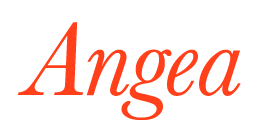One of the most important aspects of labour management is conscious breathing. You are probably thinking, if only it was that easy!! Let me tell you, the breath is the most important part of birthing. My birthing experience was very short lived. From the time my water’s brok to the delivery of Winnie was 3 hours. I Om’d and breathed my way through labour. I can honestly say, I am so thankful I went into Labour prepared. The 9 month journey allowed me to prepare my body, mentally, physically and emotionally for the task ahead- delivering Winnie. You want to go into your labour feeling prepared and confident. My solid foundation of my yoga practice and breathing techniques helped me achieve my best possible birth. The breathing techniques I used during my labour gave me the strength and focus to get through each moment and contraction. I have to say giving birth is the most amazing experience ever.
A focus on breathing allows our muscles to stay relaxed and therefore work at optimum, allowing each contraction to be as useful as possible. As we learned earlier, when muscles, mind and body are relaxed the helpful hormones; oxytocin and endorphins are produced, providing potent natural labour support.
Deep conscious breathing needs to be practiced regularly before your birth process. Some find that the benefits are so great that they continue their practice well beyond their birth experience. You’ll feel a deep sense of calm and stillness wash over the body as you practice. Your emotions will settle and your thoughts will become calm and a little more orderly. After practicing your breathing you may feel a wonderful clarity and you’ll be able to flow with any situations in your day more easily and in a less reactionary manner. This type of breath is a fundamental practice in yoga and many other forms of practice that help connect mind, body and spirit and bring us home to who we truly are.
Ujayii Breath
This traditional yogic breathing technique provides you with an intensified focus. The technique is generally applied to the exhalation for optimum use as a labour tool and is best applied during contractions, especially as they peak.
Exercise:
Sit in a comfortable position. Hold your hand in front of your mouth as if it is a mirror. Like you are cleaning your sunglasses. Take a deep breath in through your nose and then exhale through your mouth onto your hand making a “Haa” sound, as if you are fogging up the mirror. Try this a few times.
Now try the same breath, but this time close your mouth on your exhale, still making the Haa sound. Now it becomes a low, soft oceanic sound in the back of your throat. Try to breathe the same way in through your nose and out through your nose making this “Haa” sound. Practice until you inhale and exhale smoothly.
Using the breath well in labour is very important. Practise the following examples of sustainable breathing so they are second nature by the time you go into labour.
Flowing with the wave – the 5 phases of a contraction
Contractions are like a wave or bell curve. The 5 phases are as follows:
3.Contractions builds up
2. Contraction starts and builds up 4. Contraction eases off
1. Just before the contraction starts 5. rest period between
As the contraction builds, we breathe in more deeply and exhale more fully. As the contraction finishes, we reverse the order, eventually coming back to “in-nose/out-nose breathing” while we’re resting between contractions. Believe it or not, when you work with the five phases of each contraction, labour becomes like a dance that flows through a series of behaviours (dance steps)that repeat themselves, with variations.
The next exercise imitates the way your breathing needs to change as a contraction builds. Practising for something that you’re yet not able to experience requires you to use your imagination. Notice how you feel throughout this exercise. During all of this exercise, exhale either with a slack jaw, or using a slight blowing with rounded soft lips. Explore which way seems to work best for you. Knowing that you have two different ways to do the same thing means that during labour you will be able to choose the one that works best. In labour you might take a different number of breaths through each contraction, which is perfect, but this exercise will give you the appropriate practice
How do I breathe in each phase?
- Breathe in gently through your nose, then gently exhale through your mouth, remembering to relax on the exhalation anywhere in your body. Repeat this 3x, then …
- Breathe more deeply in through your nose, then exhale more fully through your mouth, remembering to relax more fully as well. Repeat 2x, then …
- Inhale as deeply as you can, then exhale as fully as you can, relaxing even more deeply. Do this 3x. This will take you to the peak of the ‘contraction’.
- As the ‘contraction’ starts to go away, repeat Steps 3 then 2, 2x each, reflecting the downward curve of the ‘contraction’
- Then do Step 1 twice more.
After you’ve done this exercise several times, time yourself through several ‘pretend contractions’. In the early part of labour, contractions will last from 15–30 seconds, and may not require you to change your breathing from how you normally breathe. As the intensity of labour increases, the contractions can last 1–1 1/2 minutes and have a very defined and strong peak. No matter how intense the peak of a contraction is, it will only last for 20–30 seconds.
To read about The Role of Acupuncture for Labour Induction you can click on the link http://www.melbourneivfacupuncture.com.au/chinese-medicine-acupuncture-labour-induction/
